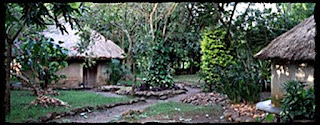Another reason for working on these big issues is that I have always admired the way sociologist Robert Sampson does this. Sampson has a paper where he articulates three "theses" that guide his research and make sense of it scientifically (Sampson 2009). When he came to ASU as a consultant for our urban project, he gave a public lecture, and he used the same three points to organize his research for a public audience. It was a very effective device and a great lecture. For the past five or six years I have periodically wondered about my own three theses or questions.
So, here is my initial stab at my three big research questions. After several years, this is the first time I have tried actually defining these questions. This is a provisional attempt, subject to amendment and change. OK, enough caveats:
1.
How did
people in the distant past form communities and cities that were able to thrive
and prosper for many centuries?
2.
How did the
interaction of local, bottom-up forces and governmental, top-down forces,
generate and shape human society and action in cities and communities?
3.
What are the
regularities of human settlement size and organization—in the present and the
past—and how can these patterns help us understand social life and
institutions?
The first question is somewhat post-hoc. I didn't start out excavating Aztec households to show how prosperous or successful they were. In fact, I thought their residents were probably poor and downtrodden. But after several excavation project and lots of analysis, my conclusion is that these people were remarkably well off. I explore this situation and grapple with ways to explain it in my new book, At Home with the Aztecs: An Archaeologist Uncovers their Daily Life (due in Feb, 2016, I am correcting proofs right now. NOTE: I did NOT set the price! Sorry.). But now, as my research interests turn to Teotihuacan, I am finding a parallel bit distinct pattern of successful urban life for many centuries: see my post on this in Wide Urban World.
The second question owes a lot to the change in my thinking after first reading Blanton and Fargher (2008). My work on neighborhoods, open spaces, and urban services fits with this broad question. It is hard to steer a reasonable course between these two poles. Traditional models in anthropological archaeology are very top-down in the way they depict states and complex societies. The basic idea for decades was that kings and states controlled everyone and everything, and we now know differently. But the complexity scientists often write as if everything is generative and bottom-up with no central control, which errs in the opposite direction (as in modeler Joshua Epstein's creed, "If you can't grow it [with an agent-based model], you haven't explained it.")
My third question reflects more recent activity on the scaling of human settlements. I've been astounded several times: first in seeing the regularities of scaling relationships in modern cities; and second, in finding that some of these same regularities work for premodern cities, and even for village societies. Working with physicists, economists, and archaeologists, this project has not only been great fun, but it is somewhat awe-inspiring to think that we are uncovering some basic fundamental regularities in human behavior, things that have not been though about in anthropology or archaeology for many decades.
I apologize for indulging in such navel-gazing here. But stepping back to think about the big picture and how one's own research fits with big ideas is useful in two ways. First it helps you understand your own work, its importance, and its links with broader ideas and domains. This can help you improve your research and writing. Second, this kind of thinking allows you to more effectively communicate with the public, and with scholars in other disciplines. We need more thinking on a grand scale. The "Grand challenges for archaeology" was a step in the right direction (Kintigh et al), but on a personal level, for individual scholars, I encourage everyone to go one step further and really nail down one's own research interests and domains at a broad and easily understandable level.
References:
Blanton, Richard E. and Lane F. Fargher
2008 Collective Action in the Formation of Pre-Modern States. Springer, New York.
Kintigh, Keith W., Jeffrey Altschul, Mary Beaudry, Robert Drennan, Ann Kinzig, Timothy Kohler, W. Frederick Limp, Herbert Maschner, William Michener, Timothy Pauketat, Peter Peregrine, Jeremy Sabloff, Tony Wilkinson, Henry Wright, and Melinda Zeder
2014 Grand Challenges for Archaeology. American Antiquity 79 (1): 5-24.
Kintigh, Keith W., Jeffrey H. Altschul, Mary C. Beaudry, Robert D. Drennan, Ann P. Kinzig, Timothy A. Kohler, W. Frederick Limp, Herbert D. G. Maschner, William K. Michener, Timothy R. Pauketat, Peter Peregrine, Jeremy A. Sabloff, Tony J. Wilkinson, Henry T. Wright, and Melinda A. Zeder
2014 Grand Challenges for Archaeology. Proceedings of the National Academy of Sciences 122: 879-880.
Sampson, Robert J.
2009 Racial Stratification and the Durable Tangle of Neighborhood Inequality. Annals of the American Academy of Political and Social Science 621: 260-280.
Smith, Michael E.
2016 At Home with the Aztecs: An Archaeologist Uncovers their Domestic Life. Taylor and Francis, New York.



No comments:
Post a Comment